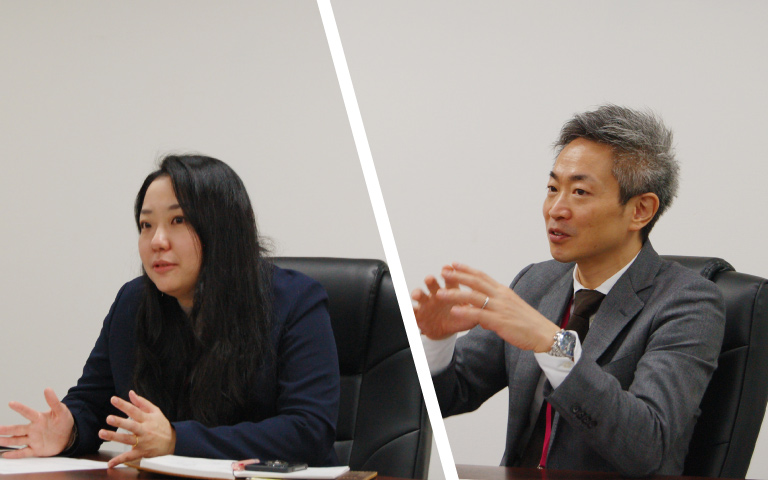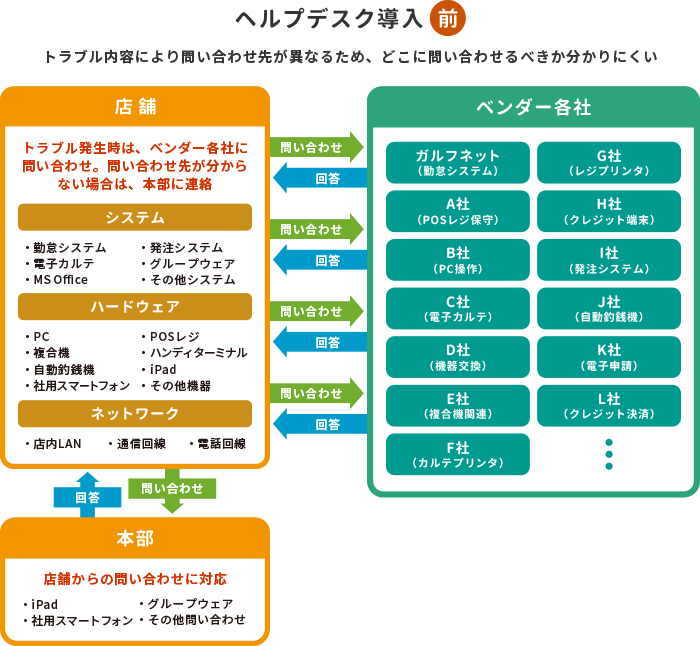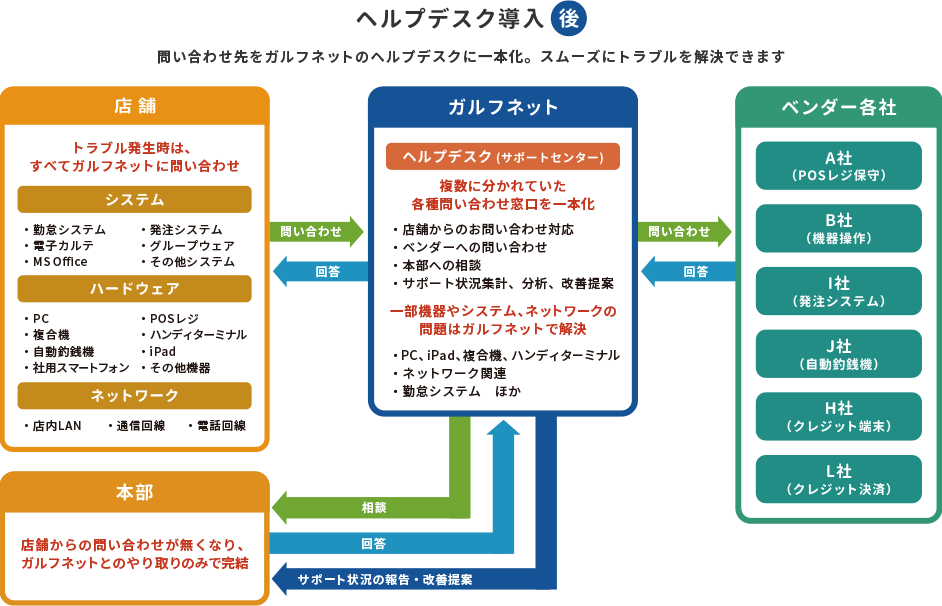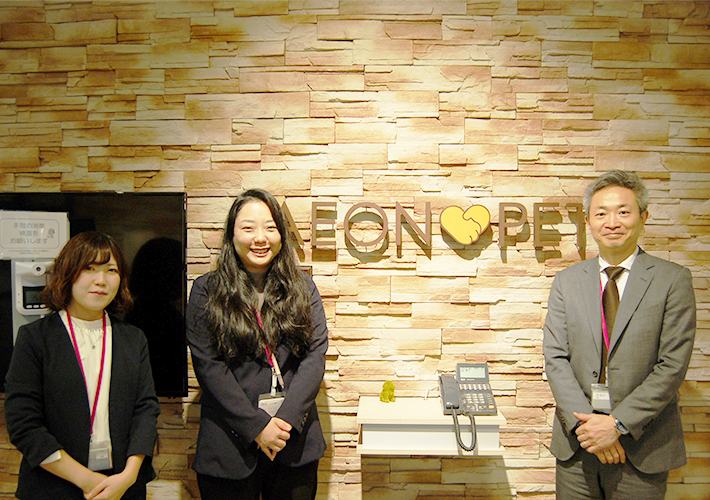Interview
First, could you please introduce your company’s business and its features?
We, AEON PET Co., Ltd., are a company belonging to the AEON Group, and we operate a variety of businesses specialized in pets.
- We operate the Animal Hospital Business, where veterinarians and veterinary assistants provide medical care in clinical settings to help maintain the health of pets.
- We also manage the Service Business, which includes grooming salons (pet beauty salons) and pet hotels.
- Through the Retail Business, we provide suggestions and solutions for pet lifestyles by selling pet-related goods.
These three core businesses are represented in approximately 200 stores nationwide under the brand name “PETEMO.”
What recent trends have you observed among your customers, and which business area are you currently focusing on?
In recent years, awareness of proper pet ownership and a focus on pet health have increased significantly. As a result, the demand for veterinary medical care at animal hospitals has grown—and become more diverse. Since the number of diseases affecting pets is also on the rise, we are paying close attention to this trend.
We currently operate eight hospitals capable of providing advanced medical treatment, often referred to as “leading-edge hospitals with high expertise.” While our focus remains on veterinary medical care, we also develop our other services in parallel.
It seems that you are placing importance on training veterinarians and improving medical technology. Could you tell us about your initiative called AEON PET Academy?
AEON PET Academy is an in-house educational initiative designed like a university. We launched our first faculty—the Faculty of Animal Hospitals—in 2019.
Employees who graduate from AEON PET Academy leverage the skills they acquired to take on leadership roles in their specialized fields and train the next generation. Various faculties are continuously being established.
As of this year (2022), we’ve established our fourth faculty, and we plan to continue developing more in the future.

Please tell us about the process that led to the adoption of the service. What issues were you facing at the time?
At the time, it had become the norm for the Information Systems Division to spend 80–90% of its working hours dealing with phone support and routine tasks.
We were not able to sufficiently respond to requests or inquiries from other departments, and the desire to break this cycle was our strongest motivation.
The Information Systems Division was working hard—no one was at fault. However, from the perspective of other departments, it seemed like “they’re not responding at all.”
Because of the sheer volume of work and the lack of a structured management scheme, we were always overwhelmed by immediate tasks. It had become a negative cycle. We felt that we had to break this cycle somehow.
When considering the service, what were your selection criteria? What set this apart from other providers? What ultimately led you to adopt it?
Of course, cost was a factor, but we placed greater value on three main points.
The first was “24/7 support.”
Since we operate animal hospitals and are responsible for the lives of dogs and cats, if a problem occurs in the middle of the night, the on-site staff feel very anxious. Being able to consult at any time gives great peace of mind. In fact, the staff at our animal hospitals have been very pleased with this.
“24/7 support” is truly a huge advantage.
The second was a solid track record. Knowing that the company has worked with many large corporations gave us reassurance.
The third point wasthe well-thought-out onboarding approach.
This likely stems from the expertise your company has developed. Your suggestions—such as “organizing tasks while working side-by-side” and “how to successfully implement the system”—were very well-considered and logical.
These three factors were decisive.
Did you face any challenges during implementation or notice anything unexpected?
We realized that far more of our operations lacked visibility than we had initially anticipated.
For example, even when handing over a routine task, simply working through the task while interviewing the person in charge was not enough. We thought the handover was complete, but in reality, we had overlooked important details, which led to several operational errors afterward.
However, by identifying the causes of these failures together and focusing on establishing a proper PDCA cycle, we were able to visualize each task and make improvements.
Being able to create this kind of relationship within just one year—where we could learn from any failure and continuously improve—was a tremendous achievement.
Your company’s attitude toward improvement has been impressive.
Another challenge involved support during network troubles.
At large facilities where three businesses (Animal Hospital, Service, and Retail) operate in a single location, the network is shared. If a network issue occurs, all operations in the facility are affected.
Together with your helpdesk, we went through repeated trial and error to determine how to restore the network as quickly as possible and how to communicate network issues internally in an accurate manner.

What kind of results did the implementation of the service bring?
Having a GulfNet employee stationed on-site created a system where all departments could work together to solve problems. We’ve seen real results in problem-solving and are truly grateful.
Could you share some feedback from employees after implementation?
Information Systems Division
Previously, our entire day would be consumed by responding to inquiries and performing routine tasks, but that’s no longer the case. We now have time for other work and can take a proactive approach. Due to the nature of our tasks, we often couldn’t respond immediately to phone or email inquiries. But now, with the helpdesk handling responses, things have improved greatly. It also reassures the people making inquiries.
Store Staff
There’s a sense of security in knowing that issues will be resolved quickly. The helpdesk staff are good listeners, so it’s easier to explain problems. The speed of response has also been surprisingly fast.
Previously, when stores emailed the Information Systems Division, replies were often delayed, which led to the misconception that the division was unresponsive.
Fast response time is the most reassuring thing for store staff. We’ve received many positive comments from them.
Also, the fact that inquiries, which were previously split across multiple channels, are now centralized in the helpdesk has simplified things. Everyone knows, “If you’re in trouble, go here,” and that’s a relief.


What is your impression of GulfNet?
During our recent visit, what left a strong impression was how friendly your employees were.
We’ve seen various helpdesks across many sites. Typically, helpdesk operators work in cubicles with partitions, but your space was open, with no partitions—so everyone can see what’s happening around them.
If someone is in trouble, others can immediately notice and support them.
Your employees seemed vibrant and enthusiastic—it made us think, “This is a good company.”
Has your impression of our company changed after implementing the Concierge Service?
I believe a large part of the positive impression comes from the staff who supported us.
You truly stood by us and worked with us. That’s something we value deeply.
Finally, could you share your future outlook?
Thanks to your cooperation, Phase 1—establishing the Support Center and consolidating contact points—has been successfully completed.
In Phase 2, our goal is to strengthen the spot support system by broadening the entry point for inquiries.
We hope to create a structure where we can properly run the PDCA cycle, improve quality, and enhance our FAQs.
We also want to improve our employees’ IT literacy.
Our workplace is primarily made up of people who love pets, so we want to reduce the time spent on indirect tasks through IT. That way, in the Retail Business, they can spend more time “talking with customers”; in the Service Business, more time on “grooming”; and in the Animal Hospital Business, more time on “treatments.”
As the Information Systems Division, we want to support this by using IT to improve the quality of their core tasks.
For example, it might be interesting to conduct in-house training on “how to effectively use IT.”

This interview was conducted while taking appropriate infection control measures. Masks were temporarily removed only during photography.







